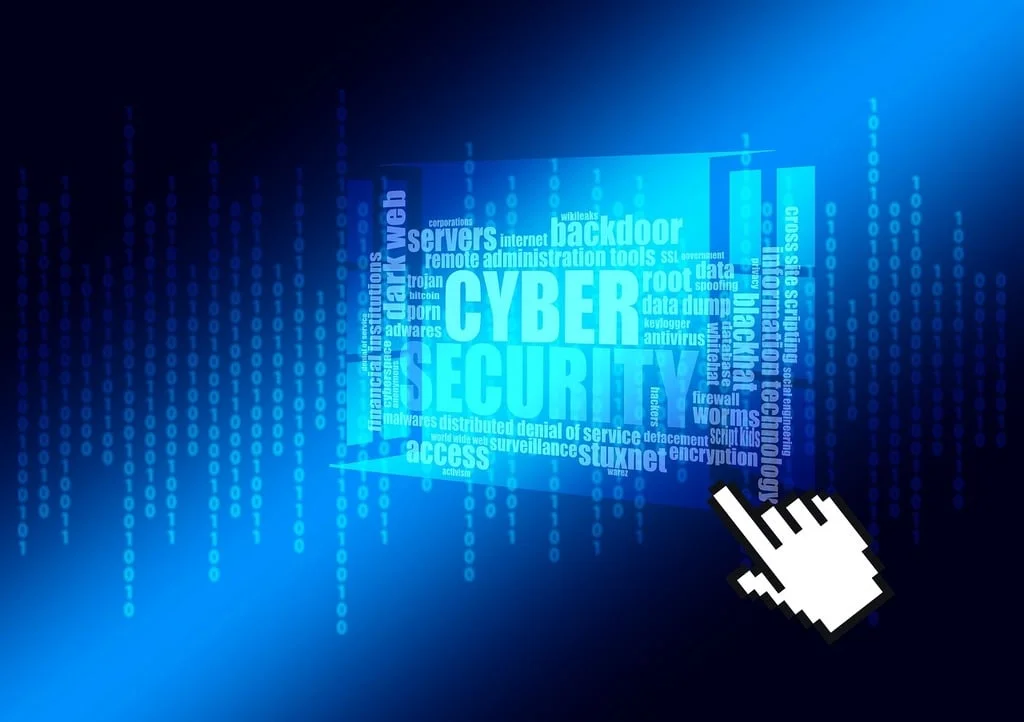In the realm of disadvantages of ai in cybersecurity, Artificial Intelligence (AI) has been heralded as a game-changer, offering unparalleled capabilities in identifying and neutralizing threats with speed and precision. However, as with any technological advancement, it’s crucial to consider not just the benefits but also the disadvantages of AI in cybersecurity. This balanced view helps stakeholders make informed decisions, ensuring that the adoption of AI enhances security postures without introducing unforeseen weaknesses. The importance of understanding both the advantages and disadvantages of AI cannot be overstated, as it shapes the future of digital security landscapes.
This article delves into the critical concerns that accompany the use of AI in cybersecurity. It discusses the issues of bias and inaccuracies in AI systems, which can lead to flawed decision-making and security vulnerabilities. Furthermore, it examines the challenges posed by vulnerabilities and attacks on AI systems, highlighting how these can be exploited by malicious actors. Additionally, the article addresses the dependency on AI technologies and the potential erosion of human skills in the cybersecurity field. By providing a comprehensive overview of these key points, readers will gain insight into the necessary considerations for integrating AI into their cybersecurity strategies effectively.
Bias and Inaccuracies in AI
AI bias involves consistent errors in AI algorithms that unfairly favor or disadvantage particular groups or individuals. These biases can originate from various sources, including flawed algorithm design, skewed training data, or inherent issues within the system architecture, leading to discriminatory decisions 1. Such biases not only affect the perception and interaction among individuals but also influence critical decisions made by these systems 2.
Data Bias
AI bias occurs when the datasets used to train AI do not accurately represent the target population, resulting in AI systems that make unfair or incorrect decisions. This includes sampling bias where the data does not reflect the diversity of the population 3 and confirmation bias where algorithms affirm pre-existing beliefs rather than providing impartial analysis 4.
Algorithmic Errors
Algorithmic bias may emerge during the selection of algorithms for creating models, often due to inherent biases in the data used for training. This can lead to AI systems that perpetuate existing biases, which may go unnoticed without thorough testing and validation processes 5.
Read more articles.
Impact on Decision Making
Biased AI can significantly impact decision-making processes, particularly in sensitive areas like national security or law enforcement. For example, biased algorithms in border control could wrongly target or exclude individuals, affecting national security and individual rights 6. In the realm of cybersecurity, biased AI may lead to the overlooking of actual threats or the misidentification of non-threats, thereby compromising security measures 7.
These biases undermine the trust in AI systems and highlight the need for rigorous testing, diverse development teams, and continuous monitoring to mitigate the effects of bias in AI-driven decision-making 8.
Vulnerabilities and Attacks on AI Systems
Adversarial attacks pose significant threats to AI systems by manipulating machine learning models to produce incorrect results. These attacks exploit vulnerabilities inherent in the AI’s learning process, often through adversarial examples—inputs subtly altered to deceive AI systems while appearing normal to human observers. Such manipulations can severely impact the performance and reliability of AI applications across various sectors, including cybersecurity, where they may lead to erroneous threat responses 9.
AI-enabled botnets represent another critical vulnerability. These sophisticated networks leverage AI to coordinate attacks, adapt to countermeasures, and execute large-scale disruptions more efficiently than traditional botnets. By employing AI, these networks can analyze and learn from the effectiveness of their attacks in real time, enhancing their ability to evade detection and maximize damage 10.
Model theft is a growing concern within the cybersecurity community, as it involves the unauthorized extraction and use of proprietary AI models. This not only leads to financial and competitive losses but also poses severe security risks. Stolen models can be reverse-engineered to discover vulnerabilities in the original systems they were designed to protect, potentially facilitating further attacks such as data breaches or espionage 11.
Dependency and Skill Erosion
Overreliance on AI
Organizations that depend heavily on AI for cybersecurity risk creating a single point of failure, which could lead to significant damage if compromised 12. This overreliance can make traditional security measures seem less critical, potentially leaving systems vulnerable if AI fails 12. As AI becomes more integrated into security protocols, it’s crucial to maintain a balanced approach and not disregard the importance of human oversight and conventional security practices 13.
Impact on Human Skills
The shift towards AI-driven security solutions can lead to a decrease in the development of human expertise in cybersecurity. AI and automation may handle repetitive and high-speed tasks, but they lack the intuitive decision-making and contextual understanding that human experts provide 14. This erosion of skills can be detrimental when unique or unexpected security challenges arise that require human judgment and experience 14. Therefore, it’s essential to continue investing in human capital alongside AI technologies to ensure a robust cybersecurity posture.
Single Point of Failure
The concept of a Single Point of Failure (SPOF) in cybersecurity is critical, as it refers to any component or system within an IT infrastructure that, if it fails, can lead to the entire system’s breakdown 15. Identifying and mitigating SPOFs is vital for maintaining the integrity and continuity of operations. This includes implementing redundancy and continuous monitoring to detect and address potential failures before they lead to significant disruptions 15.
Conclusion
Through this article, we’ve uncovered the multifaceted disadvantages of ai in cybersecurity. From the inherent biases and inaccuracies that can inadvertently weave into AI algorithms to the grave vulnerabilities and possible attacks targeted at AI systems, the path forward demands cautious optimism. Additionally, the dependency on AI could lead to a significant erosion of essential human skills within the cybersecurity realm. These highlighted concerns not only emphasize the need for a balanced and vigilant approach towards adopting AI in cybersecurity strategies but also stress the importance of addressing these issues to leverage AI’s potential responsibly and effectively.
As we march towards an increasingly digital future, the implications of these findings are profound, urging for a collaborative effort to mitigate the outlined drawbacks while fostering innovation. Therefore, stakeholders are encouraged to prioritize the development of robust, bias-free AI systems, and ensure continuous upskilling of the cybersecurity workforce. In conclusion, recognizing and addressing the challenges discussed is crucial in harnessing AI’s power to fortify cybersecurity measures, while also preparing for the unforeseen complexities of tomorrow’s digital threats.

FAQs
1. What are the negative impacts of using AI in cybersecurity? AI in cybersecurity can inadvertently empower less skilled attackers by enabling them to create or adapt malware with minimal programming knowledge. Additionally, organizations must be extra vigilant in protecting their sensitive corporate information due to the capabilities of AI.
2. What is the primary challenge when implementing AI in cybersecurity? The main challenge in using AI for cybersecurity is the scarcity of labeled data. This shortage makes it difficult to apply supervised learning effectively. While unsupervised learning methods like clustering and anomaly detection are alternatives, they often lead to false positives, which can cause alert fatigue.
3. In what ways does artificial intelligence pose a risk to cybersecurity? According to Easterly, AI can significantly enhance the threats of cyberattacks, including more sophisticated spear phishing, voice cloning, the creation of deepfakes, and the spread of foreign malign influence and disinformation.
4. What are the general disadvantages of artificial intelligence? AI comes with several disadvantages: it can reduce employment opportunities, lacks creative capabilities, does not possess emotional responsiveness, presents ethical dilemmas, may lead to increased human laziness, raises privacy and data security issues, suffers from a lack of transparency and explainability, and creates dependency and reliability concerns.
References
[1] – https://www.paloaltonetworks.com/blog/2024/03/challenges-for-ai-in-cybersecurity/
[2] – https://www.devoteam.com/expert-view/dangers-and-challenges-of-ai-in-cybersecurity/
[3] – https://www.metacompliance.com/blog/data-breaches/benefits-and-challenges-of-ai-in-cyber-security
[4] – https://www.secopsolution.com/blog/ai-in-cybersecurity-pros-and-cons
[5] – https://www.paloaltonetworks.com/cyberpedia/ai-risks-and-benefits-in-cybersecurity
[6] – https://talkbusiness.net/2024/03/the-pros-and-cons-of-ai-in-cyber-security/
[7] – https://cybersecurity-magazine.com/4-unexpected-ways-ai-bias-can-jeopardize-cybersecurity/
[8] – https://cebri.org/revista/en/artigo/112/digital-tools-safeguarding-national-security-cybersecurity-and-ai-bias
[9] – https://www.dremio.com/wiki/adversarial-attacks-in-ai/
[10] – https://www.securitymagazine.com/articles/99487-assessing-the-pros-and-cons-of-ai-for-cybersecurity
[11] – https://www.mithrilsecurity.io/content-hub/ai-privacy-and-security-risks-hub/model-theft-in-ai
[12] – https://awarego.com/ai-security-risks-hidden-dangers-of-using-ai/
[13] – https://gca.isa.org/blog/the-danger-of-overreliance-on-automation-in-cybersecurity
[14] – https://www.huntress.com/blog/humans-vs-ai-the-critical-role-of-human-expertise-in-cybersecurity
[15] – https://blog.invgate.com/spof-single-points-of-failure


[…] Read more articles. […]